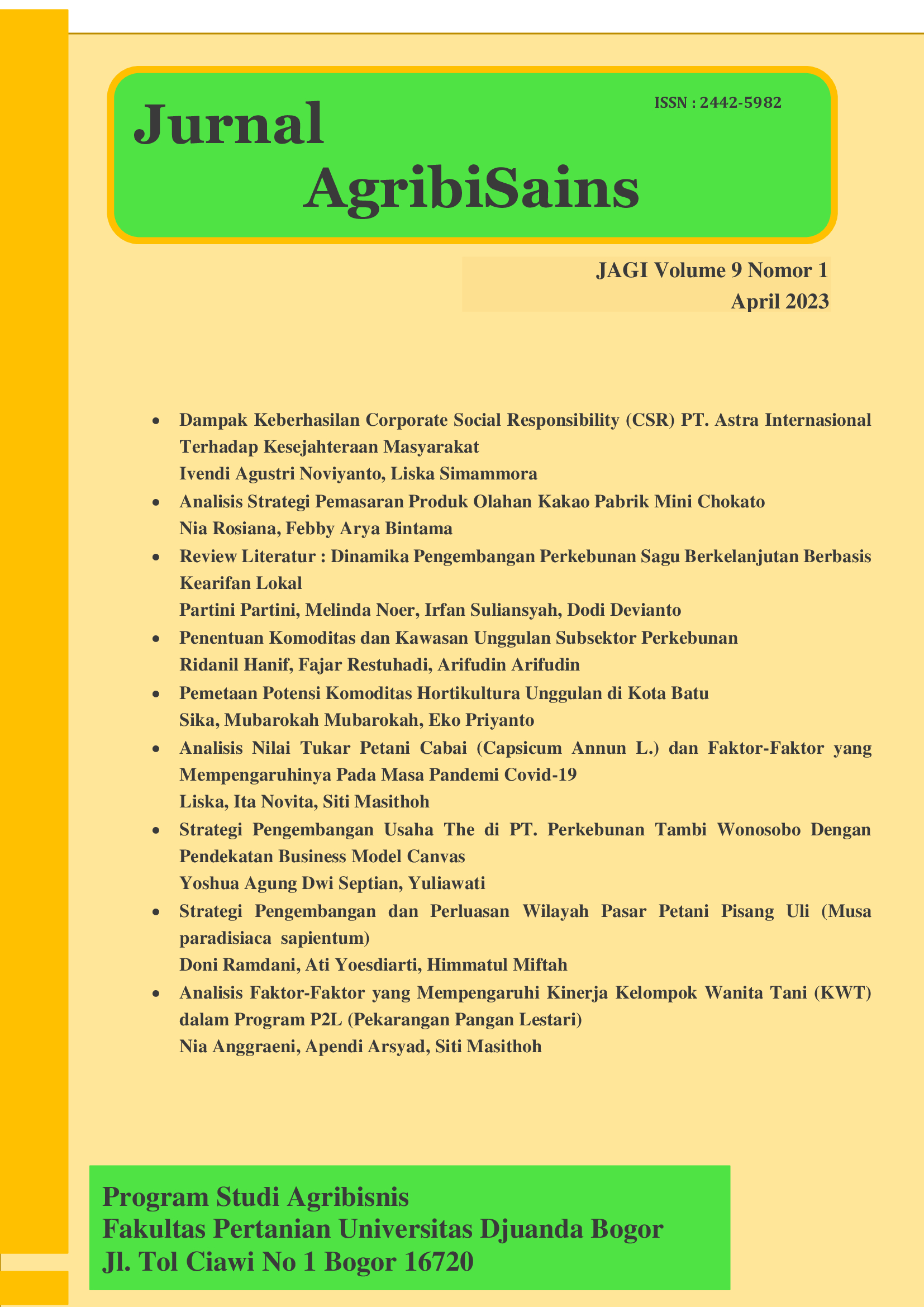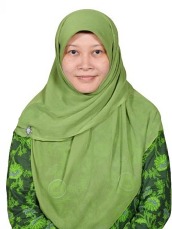Penentuan Komoditas dan Kawasan Unggulan Subsektor Perkebunan
DOI:
https://doi.org/10.30997/jagi.v9i1.7416Keywords:
Leading commodity, plantation sub-sector, rokan hulu.Abstract
In the context of regional development, regional development directions are needed based on the availability of resources, so that regional development directions can be directed and run well. In general, the goals of regional development are equity, economic growth, and sustainability so that the region can develop to the desired level. The ability to take advantage of the potential planning resources available in the region is a way of developing a region based on regional potential. One of the solutions in regional development is the development of superior commodities, with the intention that these commodities can support regional economic growth and people's welfare. The purpose of this study was to identify and determine the superior commodities of the plantation sub-sector in Rokan Hulu Regency and to determine the location of the superior production of the plantation sub-sector in Rokan Hulu Regency. Leading commodities are determined based on analysis of Sectoral Contribution Index (SCI), Growth Ratio Model (GRM), Dynamic Location Quotient (DLQ), Location Quotient (LQ) and Composite Indeks (CI). Meanwhile, plantations in plantation sub-sector superior production areas are carried out using a Geographic Information System with Hot Spot analysis Getis-Ord Gi*. Based on the results of the analysis, it is known that the leading commodities in the plantation sector in Rokan Hulu Regency are rubber and palm oil. Hot Spot analysis shows the location of the leading area, namely in North Tambusai District. The results of this study are expected to be input in determining the superior commodities of plantation estates and the development of agropolitan areas in Rokan Hulu Regency.
References
Fadillah, A., & Yusalina. (2011). Analisis Daya Saing Komoditas Unggulan Perikanan Tangkap Kabupaten Sukabumi. Jurnal Forum Agribisnis, 1(1), 39–57. https://ejournal3.undip.ac.id/index.php/gaussian/article/view/2745
Hidayat, E., & Supriharjo, R. (2014). Identifikasi Sub Sektor Unggulan Kecamatan di Kabupaten Lombok Tengah. Jurnal Teknik Pomits, 3(1), 1–4. http://www.ejurnal.its.ac.id/index.php/teknik/article/view/5746
Jana, M., & Sar, N. (2016). Modeling of hotspot detection using cluster outlier analysis and Getis-Ord Gi* statistic of educational development in upper-primary level, India. Modeling Earth Systems and Environment, 2(2), 1–10. https://doi.org/10.1007/s40808-016-0122-x
Jauhari, A. (2020). Pemanfaatan SIG untuk Pemetaan Kawasan Produksi Komoditas Unggulan Tanaman Pangan di Kabupaten Pacitan. Journal of Regional and Rural Development Planning, 4(3), 154–171. https://doi.org/10.29244/jp2wd.2020.4.3.154-171
Kurniawan, A. (2013). Model Prediksi Keberlanjutan Pembangunan Berdasarkan Daya Dukung Wilayah Di Daerah Istimewa Yogyakarta (DIY).
Muslihat, E. J., & Saridewi, T. R. (2007). Kajian Aspek Ekonomi Komoditas Unggulan Di Kecamatan Caringin Kabupaten Sukabumi. Jurnal Penyuluhan Pertanian, 2(1), 6–15.
Muta’ali, L. (2015). Teknik Analisis Regional Untuk Perencanaan Wilayah, Tata Ruang dan Lingkungan. Universitas Gadjah Mada Fakultas Geografi.
Nyerges, T. L., & Jankowski, P. (2009). Regional And Urban GIS : A Decision Support Approach. The Guildford Press.
Raharjo, S. (2015). Perencanaan Pengembangan Wilayah Berbasis Hortikultura Sayuran Di Kabupaten Batang Provinsi Jawa Tengah. Institut Pertanian Bogor.
Setiyanto, A. (2013). Pendekatan dan Implementasi Pengembangan Kawasan Komoditas Unggulan Pertanian. Forum penelitian Agro Ekonomi, 31(2), 171. https://doi.org/10.21082/fae.v31n2.2013.171-195
Wade, T., & Sommer, S. (2006). A To Z GIS : An Illustrated Dictionary of Geographic Information Systems. Esri Press.
Downloads
Published
How to Cite
Issue
Section
License
Copyright (c) 2023 JURNAL AGRIBISAINS

This work is licensed under a Creative Commons Attribution-ShareAlike 4.0 International License.
Authors who publish with Jurnal AgribiSains agree to the following terms:
- Authors retain copyright and grant the journal right of first publication with the work simultaneously licensed under a Creative Commons Attribution Share-Alike 4.0 International License that allows others to share the work with an acknowledgement of the work's authorship and initial publication in Jurnal AgribiSains.
- Authors are able to enter into separate, additional contractual arrangements for the non-exclusive distribution of the journal's published version of the work (e.g., post it to an institutional repository or publish it in a book), with an acknowledgement of its initial publication in Jurnal AgribiSains.
- Authors are permitted and encouraged to post their work online (e.g., in institutional repositories or on their website) prior to and during the submission process, as it can lead to productive exchanges, as well as earlier and greater citation of published work.









